On March 7th investigative journalist Khadija Ismayilova was
blackmailed with pictures of intimate nature. The mail received by
journalist included 6 pictures and the note: “You whore, behave, or
you will be defamed”. Author of the investigative reports about
Azerbaijani president’s family’s businesses and corruption on the
highest level, Khadija Ismayilova published the threat letter and
announced that she is not going to stop her investigations.
On March 7th investigative journalist Khadija Ismayilova was
blackmailed with pictures of intimate nature. The mail received by
journalist included 6 pictures and the note: “You whore, behave, or
you will be defamed”. Author of the investigative reports about
Azerbaijani president’s family’s businesses and corruption on the
highest level, Khadija Ismayilova published the threat letter and
announced that she is not going to stop her investigations.
On March 9, 2012 (March 8 is not working day in Azerbaijan), the
complaint on threat to journalist and invasion of privacy was
submitted to the Office of the General Prosecutor and the Ministry of
Internal Affairs.
The law enforcement’s response was late. On March 14 the video showing
Khadija Ismayilova in her bedroom engaged in sexual relations was
placed on the website, registered in the US.
The criminal case by the prosecutor’s office was started on March 16,
2012, six days after the journalist submitted the application. On
March 17, investigator of Baku prosecutor’s office Nail Aliyev
interrogated Khadija Ismayilova. Khadija Ismayilova requested that the
criminal case should also refer to Article 163 of the Criminal Code
(threatening journalist), but this request was ignored.
Alternative Investigation
On March 17, 2012 the director of Institute for Reporters Freedom and
Safety (IRFS) Emin Huseynov, IRFS journalist Idrak Abbasov, Afghan
Mukhtarli as well as the Radio Free Europe journalist and Organized
Crime and Corruption Report Project Coordinator Khadija Ismayilova
have conducted a house-check in the apartment where the secret video
filming took place. In the evening of March 17, when visiting the
apartment, they discovered the difference in colors of plaster on the
walls and found wires under the suspended ceiling of the bathroom and
kitchen adjacent to the bedroom.
During the search it was also revealed that colors of the paint on the
top of the bedroom wall facing the bed were not identical. In order to
find out what was behind the fresh paint, the adjacent kitchen wall
was also checked. Three slots were found under the ceiling; one
transparent wire was also discovered under the suspended ceiling. The
kitchen wall adjacent to the bathroom also had three holes. There were
more wires in the depth of the bath, but they could not be clearly
seen and reached without better light and without moving ceiling
planks throughout bathroom.
The group decided to come next day with better lightening and cameras.
Before departure the planks of the suspended ceiling were put back in
place, the lights turned off.
When the journalist investigation group, joined by the RFE journalist
Esmira Javadova returned to the apartment next day-on March 18, 2012,
the apartment was not the same as it was left after the search: the
lights in the hallway were on, there was a chair in the bathroom and
the rubber gloves in the sink of the kitchen that the group had not
noticed the day before. Allegedly, at the time of a brief arrival of
the group on March 18, 2012 , and then during the following departure
to bring the keys that were left in another apartment, some unknown
people were in the apartment who had to leave in a hurry before the
journalists would return. This might explain the hasty departure of
unknown people, the items left in the bathroom and the kitchen as well
as the lights that were turned on. Emin Huseynov, upon arrival on
March 18, 2012 as the group has eventually entered the apartment, had
to conduct another search and checked the kitchen and the bathroom.
The search resulted in discovery of yet another set of additional
wires : black and grey wires under the ceiling. This search was also
video-taped and photographed.
Two black wires and one grey wire were hidden under the suspended
ceiling of the bathroom. The grey one ran along the gas pipe that was
going through the entrance of the apartment and down to the lower
floors of the building. It was connected to the telephone box number
32- 3. The search was photographed and video-taped. (It was later
established that the grey wires, considered to be the highest quality
ones in Azerbaijan and sold for around 1 USD per meter, are normally
used for the telephone communications, whereas the black wires are
used for web-cameras and the audio equipment. Usually, the transparent
wires are used for electricity connections.)
Actions Of Official Investigation
On March 19, 2012 Khadija Ismayilova visited the Prosecutor’s Office
and requested an official search in the apartment. Upon arrival, the
assigned officials from the Prosecutor’s Office have been shown the
wires and included this information in the protocol. Yet, they have
refused to comment on the essence of the finding (wires) as they
claimed not being experts on the issue. The inspector also refused the
request of the lawyer Adil Ismayilov and journalist Khadija Ismayilova
to invite the expert from the Automatic Telephone Station (ATS), which
owns the box in the lower floor, in order to find out where the wires
were connected to. Instead, the investigator suggested that Khadija
Ismayilova testifies at the Prosecutor’s Office. The subsequent
testimony at the Prosecutor’s Office started with questions related to
the family members of the journalists. Although, having seen no
relevance of these questions to the matter, Khadija Ismayilova
responded to the questions and once again requested expert’s opinion
on the wires and their being connected to the telephone box. Khadija
Ismayilova submitted a written request for technical inspection in the
apartment, yet the Prosecutor’s Office did not invite anyone from the
Ministry of Communications, Baku Telephone Communication Unit or
Automated Telephone Station to conduct such an examination. Having
seen no progress on this issue, Khadija Ismayilova suggested to invite
a serviceman from the ATS herself and the investigator Nail Aliyev
finally agreed.
After contacting the ATS, Khadija Ismayilova received a return call.
The serviceman was invited to come and examine the landline in the
apartment. The serviceman arrived to the apartment and confirmed to
the group expecting him (including the investigator) that last summer
he received an order from the ATS to connect a landline phone cable to
the apartment. As he told the group, in summer 2011 he was met in
front of the building by the ordinary looking middle-age
(approximately 50 years old) man that he had never seen before. The
serviceman was told to connect the wire to the box, bring it to the
doors of apartment and leave extra 10-15 meters. He was not allowed
into the apartment. The man in the apartment gave him a chair so he
could reach the telephone box and told him that the work inside the
apartment will be done by themselves. The serviceman was not allowed
to enter the apartment, people inside it kept the door shut, but he
could hear the sounds of construction/renovation going on inside the
apartment.
The investigator took down the name of the serviceman-Nureddin Jafarov
Nurbala oglu and also wrote the testimony of the serviceman. The
serviceman, upon the request of the group, also contacted the ATS to
find out the details about the phone number and received a
confirmation that the line was connected in beginning of July, but the
phone number was further disconnected /removed.
In order to identify where the wires were connected to, as assigned by
the investigator and upon Khadija Ismayilova’s approval, the
serviceman had started to dismantle the wires. The search was observed
by the same group of people joined by Shahveled Chobanoglu, Afghan
Mukhtarli, and independent journalist Samir Kazimli. The lawyer Adil
Ismayilov and criminalistic expert Azer Ismayilov have briefly left
for the ATS to find out the number of the phone and returned to the
apartment very soon. Meanwhile, the investigator in a very suspicious
manner re-wrote the protocol and asked the serviceman to leave as soon
as he finished demolishing the connected wires.
Even though the lawyer Adil Ismayilov demanded immediate questioning
of Nuraddin Jafarov, the investigator refused to do so with the excuse
that he would be invited to the interrogation later. While reading
out the protocol it turned out that neither Nureddin Jafarov’s
arrival, nor his testimony regarding the wires was mentioned in the
protocol. The demolition of the wires done by the serviceman was not
reported either. All the requests to include this in the protocol
were refused and it was eventually signed by Khadija Ismayilova with
the note referring to the protocol not reflecting the whole story.
On March 20, 2012 Khadija Ismayilova once again contacted the
investigator suggesting to come to the Prosecutor’s Office for further
testimony, yet he never returned a call although promised to do so
upon checking his schedule. It is also worth mentioning that while
asking for technical search of the apartment, Khadija Ismayilova
insisted that the assigned person should not have any connection with
the Ministry of National Security. According to the information
possessed by Khadija Ismayilova, the investigator Nail Aliyev is a
relative of a high official at the MNS (Nail Aliyev is the son-in-law
of the head of the investigations department of the MNS).
During the search his behavior seemed suspicious, moreover, he refused
to protocol an important testimony of serviceman Nuraddin Jafarov and
find out who ordered an additional phone line through the ATS for the
apartment where the secret video taping took place.
Additional Findings And Conclusions
Later, during the documented by Khadija Ismayilova conversation with
the ATS serviceman, it was established that the wiring was conducted
on July 2, 2012, Saturday, when Khadija Ismayilova was out of the
country and only few days after the story on president’s daughters’
communication business was published by RFE/RL in Azerbaijani and
English.
The wiring of the apartment was done with involvement of at least
government agency: someone ordered a telephone line without official
request from the owner.
There are no evidences that office of prosecutor conducted any
investigative operations apart from what described above since March
15, when the criminal case was open.
Khadija Ismayilova demanded the criminal case to be started based on
article 163 (threatening a journalist) and 156 (invasion of privacy),
but only invasion of privacy is being investigated.
Access to investigation is extremely limited for Khadija Ismayilova
and lawyer Adil Ismayilov.
Newspapers, related to ruling party and government agencies, took part
in the smear campaign against the journalist and these publications
should also be examined as an evidence of threat to journalist.
The prosecutor’s office does not document evidences even upon request
of Khadija Ismayilova and lawyer Adil Ismayilov. The evidences show
that the government agencies were involved in the crime and
prosecutor’s office fails to act as an independent investigative body.

